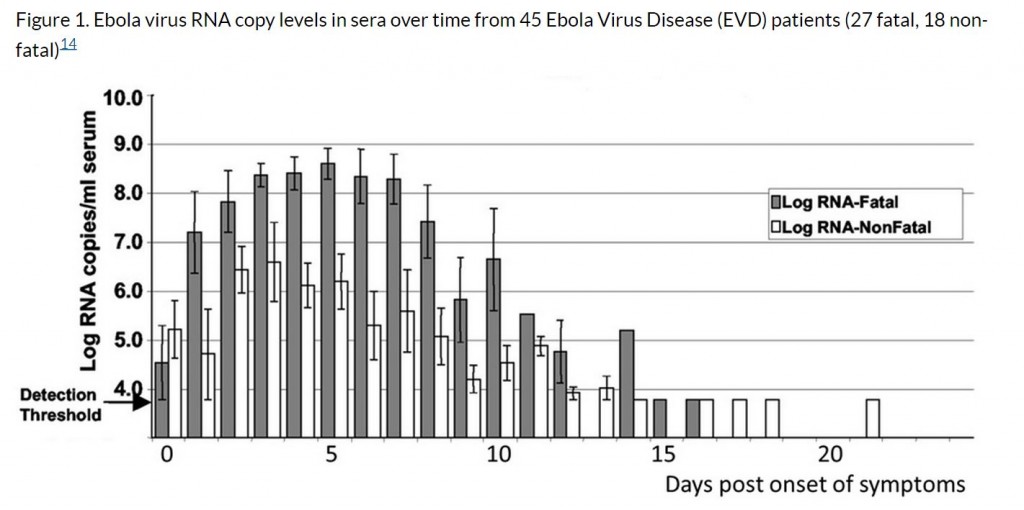
While Chris Chrisite toasted fellow quarantine advocate Rick Scott at a fundraiser in Florida, Kaci Hickox met with her attorney to prepare a legal challenge to her quarantine.
It’s really difficult to say which poor response to Ebola has done more damage to the public health system in the United States. First, we had the series of unforgivable errors at Texas Health Presbyterian Dallas that resulted in Thomas Duncan being sent home with Tylenol and antibiotics when he first presented with Ebola symptoms. This was followed up after he was admitted by Nina Pham and Amber Vinson coming down with the disease after they treated him. Now, we have Kaci Hickox, who treated Ebola patients in West Africa, confined to an unheated tent in a New Jersey hospital for 21 days even though she is asymptomatic and has tested negative for Ebola. Twice.
The hysteria over retracing the steps of Craig Spencer in New York City just before he developed his fever illustrates the way the US press has misled the public about when and where Ebola risk exists. Abundant evidence from this and previous Ebola outbreaks demonstrates clearly that there simply is no risk of transmission from asymptomatic patients and that transmission risk grows through the course of the infection.
We see that principle demonstrated very clearly in Duncan’s case history. See this terrific ABC timeline for relevant dates quoted below. Duncan arrived in Dallas September 20. No passengers on any of the flights he took have developed Ebola. The incubation period has elapsed, so we know that no transmission of the virus occurred during any of his flights. Duncan had symptoms on his first hospital visit on September 26 but was sent home. He was later admitted on September 28. No patients or personnel from the hospital became infected from his visit September 26. The incubation period has expired, so we know for certain that transmission did not occur for anyone near Duncan that day. Similarly, even though they were in the apartment with him for days after he developed symptoms, none of the residents of or visitors to the apartment where Duncan was staying in Dallas became infected. The incubation period for that exposure also has expired. From this timeline developed by the New York Times, it appears that Pham and Vinson treated Duncan on the day before he died, which would be at the time when the amount of virus being produced by his body was nearing its maximum.
The load of virus in a patient’s blood over the course of Ebola infection has been studied. In this CDC review, we have a graph showing the amount of virus over time:
On first glance, one might think that this graph doesn’t show much difference between the viral load at the onset of symptoms and the maximum output of virus. But if we look at the vertical axis of the graph, we see that what is plotted is the log (or logarithm) of the number of copies of RNA (the virus genetic content) per milliliter (mL) of of blood serum. That means that the number on that axis tells us how many zeros are on the number of virus particles. The axis begins at “4”, which means 10,000 virus particles per mL, which is also noted as the lower level of detection for the way the measurement was carried out. So from this graph, we see that on day 0 (which would be before symptoms are shown), the viral load ranges from undectectable to around the tens of thousands of particles per mL. Once symptoms develop, that load jumps dramatically, to tens of millions per mL. That represents a jump of around three logs, or a factor of 1000 times more virus in the blood. A few days later into the infection, we see the load approaching a billion viral particles per mL, about a hundred fold higher than on the first day of symptoms.
That Duncan’s family and friends, even though they were around him well into the time after he developed symptoms and yet did not contract the virus illustrates pointlessness of quarantining Hickox or any other returning health care worker who treated Ebola patients. Before they become extremely ill, Ebola patients appear to be virtually incapable of transmitting the disease. To calm public hysteria that has been whipped up by the sensationalist reporting surrounding these cases, I can agree with calls for health care workers like Hickox to be kept in voluntary home isolation with monitoring twice a day for a fever. These are health professionals with a vested interest in detecting any symptoms once they develop (odds of survival appear to be better the earlier treatment is started), so self-monitoring of temperature should be enough, but if states want to waste precious health-care dollars sending someone out to take those temperatures, so be it. But an actual quarantine serves no purpose and creates a real barrier to those noble souls contemplating spending time on the front lines treating this horrible disease in an area where many of the health care providers have already succumbed due to the shortage of suitable facilities, equipment and supplies.
Fortunately, New York Governor Andrew Cuomo, who had originally gone along with Christie in implementing the quarantine policy for returning “high risk” individuals, relented last night and went with a more rational policy. Other states may well take some time and a few legal proceedings before sanity sets in.
The folly of the quarantine policy will be highlighted further once a few more incubation periods have elapsed. For example, we are 14 days into the 21 day incubation period since the October 13 flights Amber Vinson took back to Dallas once her fever was beginning to develop. There was much hysteria about people “exposed” on those flights. I will stick my neck out here and predict that we will see precisely zero people infected from being on those flights with her. Similarly, the hysteria around the Uber car, the bowling alley and the meatball shop visited by Craig Spencer just before he came down with symptoms will need another 17 days to be proven baseless once we see that he didn’t infect anyone, either.
Ebola is deadly, but we simply must use what we know about it in applying our resources to fighting it.
Update: It appears that while I was writing this post, Christie is already beginning to admit his error because Hickox is now likely to be released.
